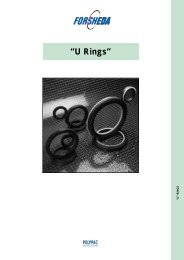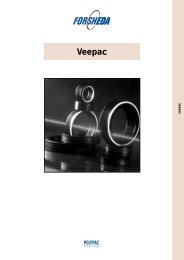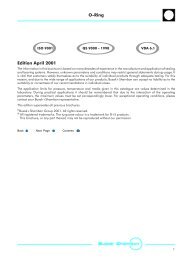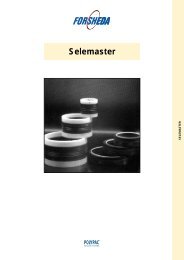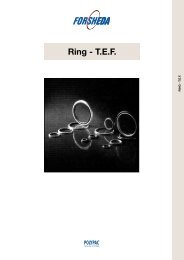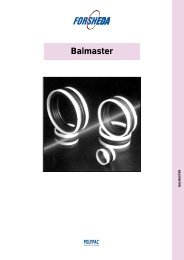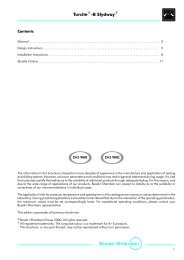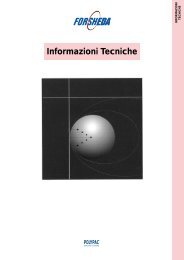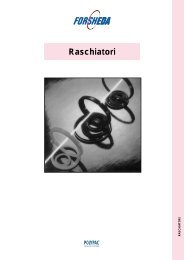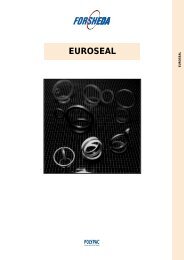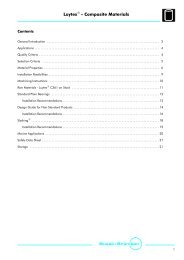Rotary Seals - Dilanda.it
Rotary Seals - Dilanda.it
Rotary Seals - Dilanda.it
You also want an ePaper? Increase the reach of your titles
YUMPU automatically turns print PDFs into web optimized ePapers that Google loves.
Axial Shaft Seal<br />
Design instructions<br />
The design of the sealing area should be made according to<br />
the information on the individual types given in Figure 75<br />
and 76.<br />
Su<strong>it</strong>able mating faces for the sealing lip can be achieved in<br />
various ways, f.i. by using the hardened end face of a Roller<br />
bearing. The bearing must not have identification marks<br />
on the side used as a mating face. Other design possibil<strong>it</strong>ies<br />
are shaft collars, back-up washers, etc.<br />
The mating face can be of steel, brass, bronze, aluminium<br />
alloys and ceramic materials. The mating surface must be<br />
clean and smooth w<strong>it</strong>hout spiral grooves or scratches.<br />
Recommended surface hardness for steel is HRC > 40, for<br />
other materials lower hardness can be employed.<br />
Installation recommendation<br />
Before installation of the seal, the sealing surface should<br />
be cleaned and greased lightly to minimize wear during<br />
the run-in phase.<br />
Installation is, in most cases, performed “blind“, i.e.<br />
uniform contact between the sealing lip and the mating<br />
face cannot be checked visually. During installation the<br />
sealing lip must not be damaged or deformed, and the seal<br />
must be installed parallel to the mating face. This is best<br />
ensured if the seal is installed against a seat in the housing<br />
w<strong>it</strong>h an assembly tool (Figure 78).<br />
Optimal seal performance is obtained when the seal or<br />
mating face is pos<strong>it</strong>ioned in line w<strong>it</strong>h the front end of the<br />
seal.<br />
Surface roughnesses:<br />
Contact surface: w<strong>it</strong>h oil lubrication<br />
R max < 2.5 μm<br />
(R a 1.0 μm, R z < 1.6 μm)<br />
w<strong>it</strong>h grease lubrication<br />
R max < 6.3 μm<br />
(R a 2.5 μm, R z < 4.0 μm)<br />
Radial runout of the shaft has very l<strong>it</strong>tle influence on seal<br />
efficiency.<br />
The axial runout - at the maximum permissible rotational<br />
speed - must not exceed 0.03 mm when sealing against oil<br />
and 0.05 mm when sealing against grease.<br />
0.1 Assembly tool<br />
Figure 78<br />
Installation of the axial shaft seal using an<br />
assembly tool.<br />
Latest information available at www.busakshamban.com<br />
Ed<strong>it</strong>ion April 2006<br />
181



